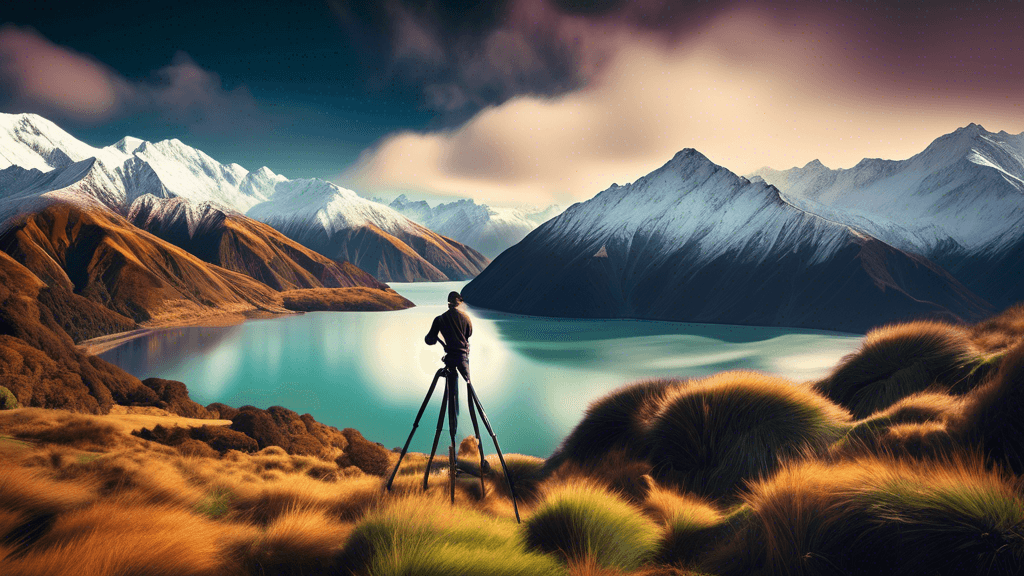
Capturing the Seasons: A Photographic Journey Through New Year Zealand
Share
Embarking on a Photographic Expedition
For both budding and seasoned photographers, New Zealand presents a unique canvas that transforms dramatically with the changing seasons. But what does it take to capture the very essence of this landscape’s seasonal metamorphoses through the lens? This article is designed for photography enthusiasts who are enchanted by the natural world and keen to explore the diverse environment of New Zealand through their cameras.
Understanding New Zealand’s Varied Climate
New Zealand's climate is as varied as its landscape. From the sub-tropical warmth of the North Island to the temperate conditions of the South, each area offers distinct seasonal changes. Capturing these shifts requires an understanding of New Zealand’s environmental rhythm:
- Summer (December - February): This season features long, bright days and lush greenery, ideal for capturing vibrant landscapes and wildlife in full bloom.
- Autumn (March - May): Autumn paints the landscape in hues of orange, red, and yellow, perfect for dramatic woodland scenes and golden hour photography.
- Winter (June - August): The colder months bring snow-capped mountains and frosty mornings, creating pristine, white landscapes and opportunities for capturing early morning mists.
- Spring (September - November): Spring witnesses a burst of life as flowers bloom and fauna reemerges, offering dynamic wildlife and floral photography.
Equipment: Choosing the Right Tools
Each season not only changes the landscape but also alters the light and conditions under which you'll be shooting. Ensuring you have the right equipment is crucial:
- Camera: A DSLR or a mirrorless camera with interchangeable lenses offers flexibility and high-quality results.
- Lenses: A wide-angle lens (for vast landscapes) and a telephoto lens (for distant wildlife) are essential.
- Tripod: A sturdy tripod is invaluable, particularly for long exposures in low light conditions.
- Filters: Neutral density filters and polarizers can help manage light and enhance colors, especially around water and sky.
- Weather protection: Weather-sealed equipment and protective cases ensure your gear remains safe in unpredictable weather.
Techniques for Seasonal Photography
Each season requires different techniques to make the most of the natural conditions. Here are some tips to consider:
- Summer: Harness the vibrant early morning or late afternoon light to avoid harsh midday sun.
- Autumn: Use the golden and blue hours for enhanced color saturation that complements autumnal tones.
- Winter: Experiment with exposure settings to correctly capture the brightness of snow and ice without losing detail.
- Spring: Focus on macro photography to highlight the delicate details of blooming flowers and budding leaves.
Exploring New Zealand through your camera is like stepping into a series of postcards, each more breathtaking than the last, notes Sarah Chen, a renowned landscape photographer based in Auckland. The dynamic landscapes here challenge you to adapt and experiment, pushing your photographic skills to new heights.
Local Insight: Knowing When and Where to Go
Timing is everything in photography. Researching and planning your visits can significantly impact the quality of your photographs:
- Lake Tekapo in Winter: The white snow against the bright blue lake makes for a picturesque scene.
- Milford Sound in Spring: The waterfalls are at their most dramatic after the winter snow melts.
- Hawke's Bay in Autumn: The region is famous for its fall foliage, providing a colorful tapestry for landscape shots.
- Bay of Islands in Summer: Ideal for vibrant seascape and wildlife photography due to the active marine life.
Ronan O'Connell, a professional photographer originally from Queenstown, highlights the importance of local knowledge: Sometimes, it's not just about what you're capturing, but about understanding the spirit of the place and translating that into your frame. Always talk to locals and spend time just observing.
Sustainability and Ethical Photography
As photographers enchanted by nature, it's our duty to protect the environments we work within. Practicing ethical photography means respecting wildlife, leaving no trace, and adhering to local regulations. Always remain aware of your impact and strive to preserve the natural beauty of New Zealand for future generations.
Do you feel ready to embark on your photographic journey through New Zealand? Remember, preparation, understanding of your environment, the right equipment, and respect for nature are your keys to capturing stunning, impactful images. Embrace each season, and let New Zealand's landscapes inspire your photographic adventures!
Ready to capture the beauty of New Zealand throughout the changing seasons? Start planning your trip, and let each photograph tell a story of this incredible land.





